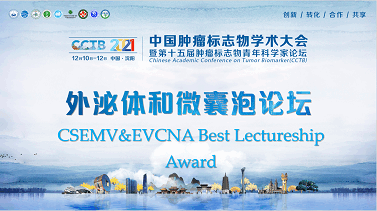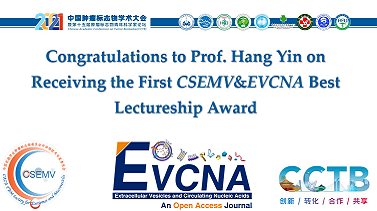A Video Interview with Dr. Moran Amit, a Winner of Young Investigator Award in 2020 Annual Meeting of American Society of Extracellular Microvesicles
Personal Introduction
Moran Amit, M.D., Ph.D. Assistant Professor, Department of Head and Neck Surgery - Research, Division of Surgery, The University of Texas MD Anderson Cancer Center, Houston, TX, USA. Dr. Amit holds a clinical background as a head and neck surgeon trained in the Department of Head and Neck Surgery, and he obtained a Ph.D. in Cancer Biology at the Israel Institute of Technology in Haifa, Israel. He was recruited to the Department of Head and Neck Surgical Oncology at MD Anderson in April 2019, who has an active research laboratory focusing on cancer-related neurogenesis and axonogenesis and on the role of neuro-immunology in cancer.
Introduction to the Brief Interview
In the volume1, 2020 of Extracellular Vesicles and Circulating Nucleic Acids (EVCNA), we published a meeting abstract and a report highlight of 2020 Annual Meeting of American Society of Extracellular Microvesicles (ASEMV). It was successfully held as a virtual conference during November 16-19, 2020 due to the COVID-19 pandemic. Besides, a well-written commentary from Dr. Amit and an editorial from Editor-in-Chief Prof. Loh were included in this volume.
This commentary entitled "Head and neck cancer exosomes drive microRNA mediated reprogramming of local nerves" provides comments on the new research findings by Dr. Amit et al. published in Nature. We are honored to invite Dr. Moran Amit, a winner of Young Investigator Award in 2020 Annual Meeting of ASEMV and the corresponding author of this commentary, to introduce the details about this new research finding.
Q1: Congratulations to you on winning the Young Investigator Award for your work on p53 and axonogenesis in cancer at the 2020 Annual Meeting of ASEMV. Could you introduce the details about this work?
Q2: Your recent research described the trophic relationships between oral cavity squamous cell carcinomas (OCSCCs) and nearby autonomic neurons arising through direct signaling between tumors and local neurons. Could you further introduce the impact of this mechanism on the clinical treatment of head and neck cancer?
Q3: Your group published a commentary on EVCNA entitled "Head and neck cancer exosomes drive microRNA mediated reprogramming of local nerves", which illustrates the importance of EV contents, and more specifically, miRNA signaling in mediating the trophic relationships between tumors and neurons that drive tumor growth. Does that mean a part of your future work will focus on further deciphering EV-mediated signaling?
Q4: At the beginning of 2020, you published this research finding as the first author in Nature. It is a goal and honor for many young and potential researchers to publish articles in Nature. What suggestions do you have for young researchers devoted to scientific research?
Respectfully submitted by the Editorial Office of Extracellular Vesicles and Circulating Nucleic Acids.

















